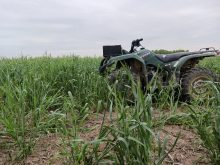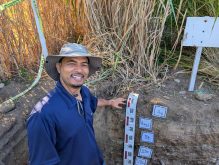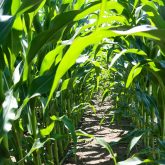Analysis of 36,000 yield observations from 22 long-term cropping experiments shows that greater rotational diversity reduces productivity risks posed by adverse weather.
Why it matters: Farmers can better weather environmental risks with greater crop rotational diversity.
This is the conclusion of the Diverse Rotations Improve Valuable Ecosystem Services (D.R.I.V.E.S.) Project, an initiative conducted by 30 scientists from across Canada, the United States and Mexico, in which different crop rotations and individual component crops within rotations were analyzed along with multiple metrics, soil types and cropping systems.
Read Also

Claas brings 1000 Series SP forage harvesters to Canada
In mid-August, Claas unveiled its new line of Jaguar forage harvesters at an event in Visalia, California, deep in the heart of that state’s dairy region.
A public database of crop rotational information has since been created, designed to inform farmers, policy makers and others about cropping systems, policies or programs that can reduce risk.
Across most sites, findings show maize and soybean output increased as the number of species and rotation length increased, while results for complete rotations depended on which crops were present.
Conversely, diverse rotations reduced rotation-level output at eight sites, though this was due to the addition of lower-output crops such as small grains.
According to the project website , the latter point highlights trade-offs with increasing rotational diversity. Less-productive crops reduce overall risk while incurring lower immediate returns for the grower.
The project abstract, published in the journal One Earth, describes such economic hurdles as a barrier to increased diversity at the farm level, particularly when “producers are uncertain about the risk-reducing benefits of diverse rotations.”
The point of the database is to reduce that uncertainty.
Adrian Correndo, assistant professor of sustainable cropping systems at the University of Guelph’s Elora Research Station, was one of two Canadian researchers who contributed to the D.R.I.V.E.S. initiative. Dave Hooker, associate professor of plant agriculture at Guelph’s Ridgetown campus, also contributed.
The pair provided information from two decades-long crop rotation studies in Ontario, highlighting how greater crop diversity – even just maintaining winter wheat in corn and soybean rotations – did provide insulation against adverse weather conditions.
“If we add winter wheat, we may have a four or five per cent benefit in corn yields under conventional tillage, especially if we have that winter wheat interseeded with red clover. This is particularly true in dry years,” says Correndo.
He later adds better water infiltration and greater nitrogen-holding capacity are also consistent across soils that are regularly planted with winter wheat and other additional crops.
“We’re even seeing a positive effect in soybeans. That’s something we were not expecting … For us that’s more than a 10 per cent improvement … and again, the benefits are especially in dry years.”
The project website says rotational information of this kind can “enhance our understanding of the value of diverse crop rotations and insights connecting agricultural practices to societal outcomes, from farm economic performance to consumer nutritional choices.”
The full report elaborates in part by raising questions about the way agriculture is currently valued. That is, whether a focus on the dollar valuation of a few highly productive crops is the only way forward.
“Market valuation is shaped by government policies that incentivize additional demand for these crops, such as direct and indirect subsidies for maize-based biofuels and confined animal feedlot operations. Alternative ‘metrics of success’ for crop-rotational complexity such as economic performance using net returns, nutritive value of diets, impact on environmental quality, and the degree of non-renewable inputs required may not support the status quo favouring simple rotations (i.e., one or two crops).”
For Correndo, the take-home for farmers, as well as those involved in policy development, is that long-term Ontario studies show productivity increases over time, during periods of adverse conditions, from rotational diversity.
“We are dealing with a lot of uncertainty. That’s basically farming – gambling every year. Maybe we should establish a safe range of outcomes rather than arbitrary numbers,” he says, referring to implementation of specific environmental metrics in emissions and other environment-related policies.
“Think of it like how we look for the optimal nitrogen rate. It’s a magic number, but it doesn’t exist. It needs a range.”













